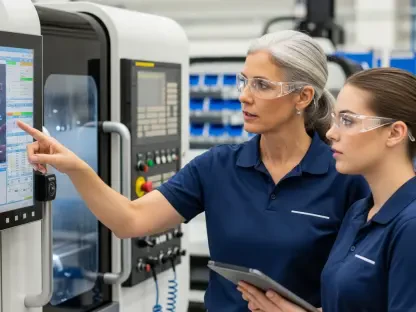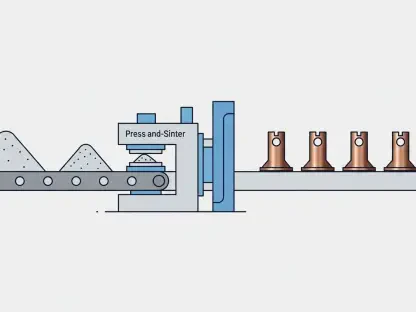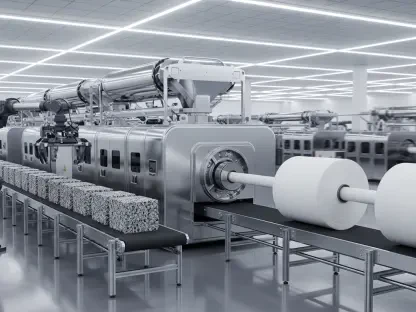In the dynamic landscape of industrial power systems and aerospace technology, few voices carry the weight and insight of Kwame Zaire. With a robust background in manufacturing, electronics, and equipment, Kwame has established himself as a thought leader in production management, predictive maintenance, quality, and safety. Today, we dive into his expert perspective on the evolving power systems market in India, exploring trends in governmental and private sector business, the surge in data center demand, and the critical role of national security and backup power solutions in shaping the future of this industry.
How has the power systems business landscape in India transformed over the past couple of decades?
Over the past 25 years, the power systems business in India has seen a remarkable shift. Initially, the focus was heavily on serving governmental needs—think naval and army applications, alongside some mining operations and emergency backup for critical infrastructure like hospitals. But as the market matured, we’ve witnessed a broader reach into diverse sectors. Now, there’s a significant pivot toward non-governmental sectors, driven by rapid urbanization and technological advancements. The rise of data centers and semiconductor manufacturing has opened new avenues, fundamentally changing the demand profile for power solutions.
What can you tell us about the changing balance between governmental and non-governmental business in this space?
Historically, the split has been about 70% governmental to 30% non-governmental business in India for major players in power systems. This year, however, we’re seeing that balance shift closer to 50-50. Looking ahead to 2026-27, projections suggest a flip to 60% non-governmental and 40% governmental. This change is largely fueled by the explosive growth in private sector needs—data centers, industrial backup power, and semiconductor facilities are driving demand like never before, while the overall market pie continues to grow.
Why are data centers becoming such a pivotal area for growth in India’s power systems market?
The data center boom is a game-changer globally, and India is no exception. With the digital economy skyrocketing, the need for reliable, high-capacity power solutions is critical. Companies are tailoring strategies to meet this demand, focusing on large-scale projects. For instance, there’s a massive 170-megawatt data center installation in Pune catering to a global hyperscaler. This kind of project not only showcases the scale of opportunity but also pushes innovation in power delivery and efficiency to support these energy-intensive facilities.
Can you elaborate on the specific solutions being developed for data centers in India?
Absolutely. For data centers, the emphasis is on providing robust, scalable power systems that ensure uptime. This includes high-efficiency gensets and distributed energy systems capable of handling massive loads without faltering. We’re talking about custom solutions that integrate seamlessly with the unique requirements of hyperscale facilities, ensuring not just power supply but also sustainability through optimized fuel consumption and reduced emissions. It’s about building trust with clients by guaranteeing operational continuity.
How do gas engines fit into the broader growth strategy for non-governmental sectors?
Gas engines are becoming a cornerstone for growth because they offer a cleaner, more flexible alternative to traditional diesel systems. They’re particularly valuable in non-governmental applications where environmental considerations are increasingly important. These engines support a range of uses—from industrial power backup to continuous operation in manufacturing hubs. Their adaptability and lower carbon footprint make them a strategic focus for meeting the evolving demands of private sector clients in India.
What role does uninterrupted power play in supporting emerging industries like semiconductor manufacturing?
Semiconductor manufacturing is incredibly sensitive to power disruptions—even a millisecond of downtime can result in massive losses. Uninterrupted power solutions are not just a luxury but a necessity for this sector. We’re seeing tailored systems that provide seamless backup and critical power support, ensuring that production lines for semiconductors, electronics, and even automotive manufacturing never skip a beat. These solutions are designed to handle high precision and reliability standards, which are non-negotiable in such industries.
How is the focus on national security influencing power systems strategies in India?
National security remains a top priority, especially in naval and land defense applications. The strategy involves supplying competitively advantaged products—think propulsion systems and large engines—that are critical for defense operations. What’s exciting is the shift toward localization, where production of these propulsion engines is now happening within India through partnerships with local entities. This not only strengthens national security by reducing dependency on imports but also boosts the domestic economy and supply chain.
Can you share insights on the importance of backup power solutions in the Indian market?
Backup power solutions are vital in India due to the inconsistent grid reliability in many regions. Industries like semiconductors, automotive, and flexible manufacturing rely heavily on continuous power to avoid costly interruptions. Beyond that, critical infrastructure—hospitals, emergency services—depends on these systems for safety and functionality. The market is seeing a push toward more robust, efficient backup solutions that can kick in instantly, ensuring that whether it’s a factory or a healthcare facility, operations remain unaffected by grid challenges.
What is your forecast for the future of the power systems market in India over the next decade?
I’m optimistic about the trajectory of India’s power systems market over the next ten years. We’re likely to see non-governmental business continue to dominate, potentially reaching a 70-30 split or higher as data centers, semiconductor manufacturing, and other private sector needs grow. Localization of production will deepen, enhancing India’s role as a global manufacturing hub for power solutions. Additionally, sustainability will become a bigger driver, with gas engines and renewable integrations playing a larger role. The challenge will be balancing rapid growth with infrastructure readiness, but the potential for innovation and investment in this space is immense.









